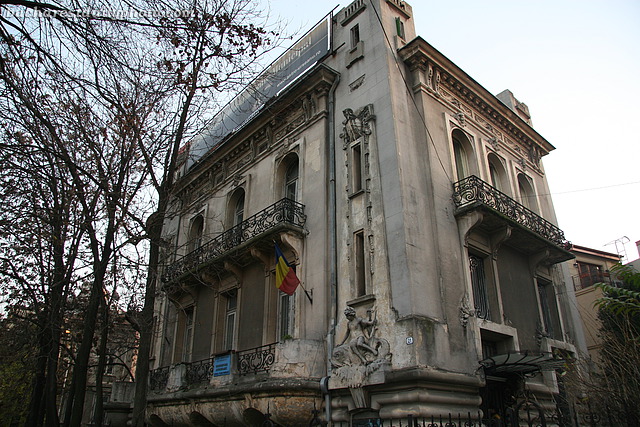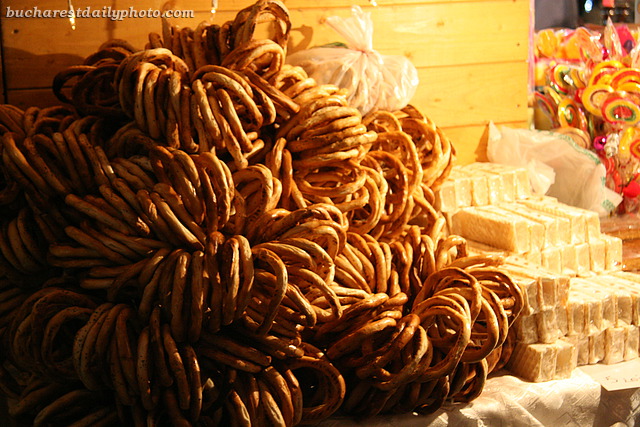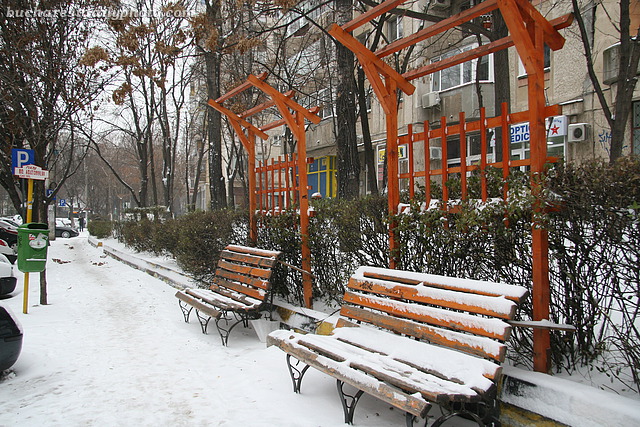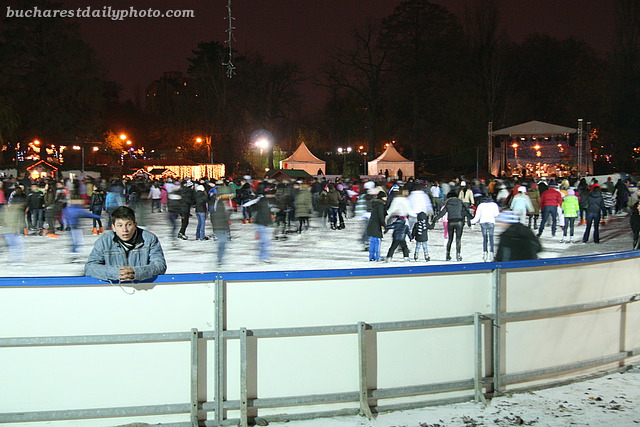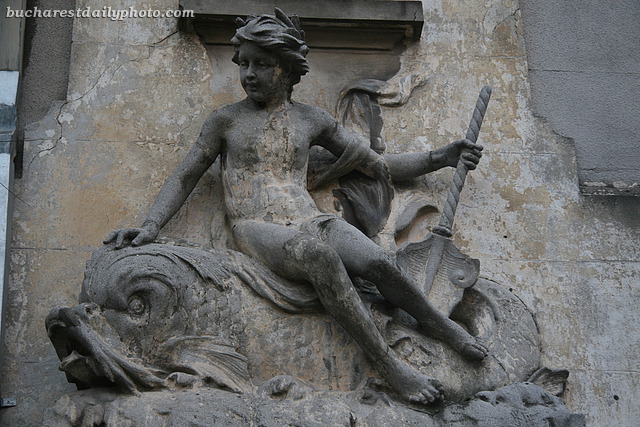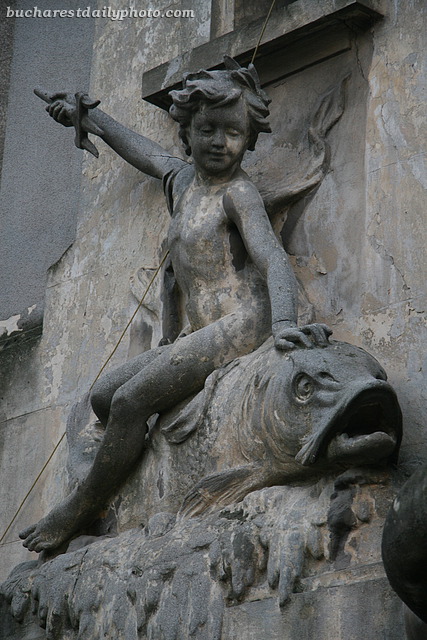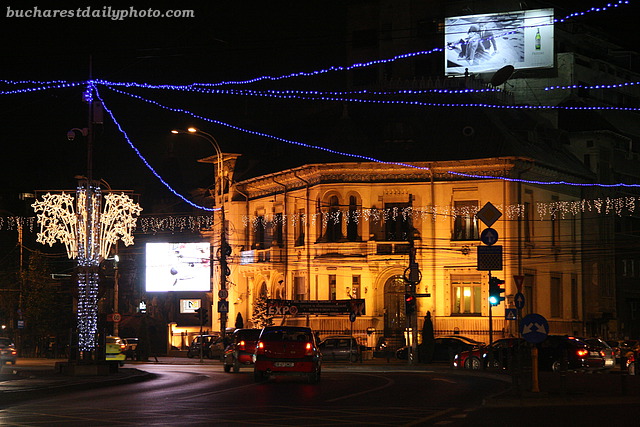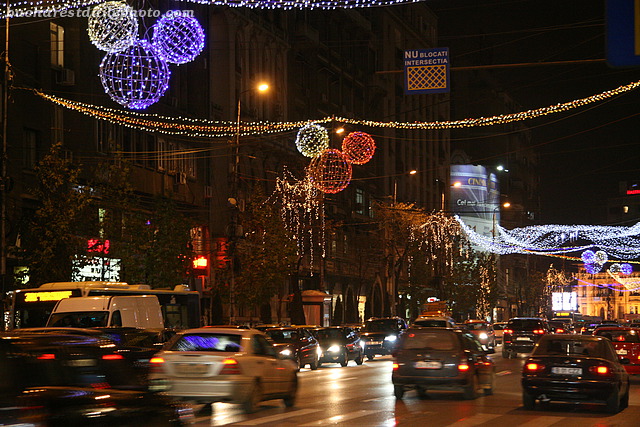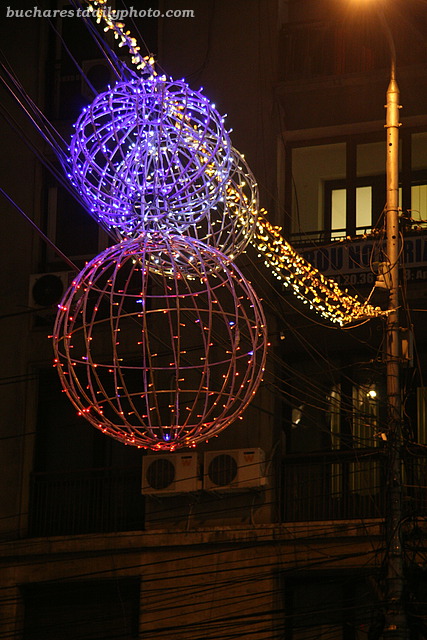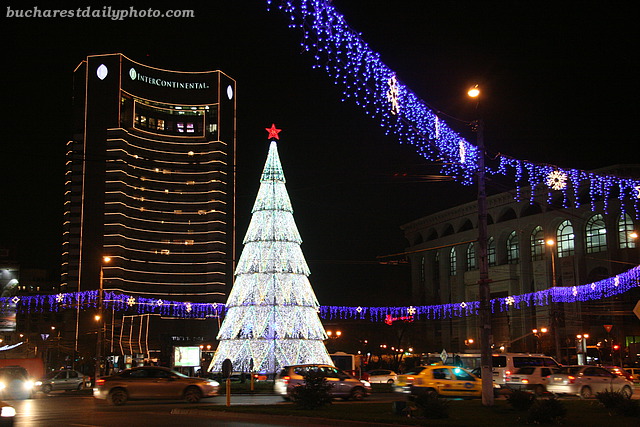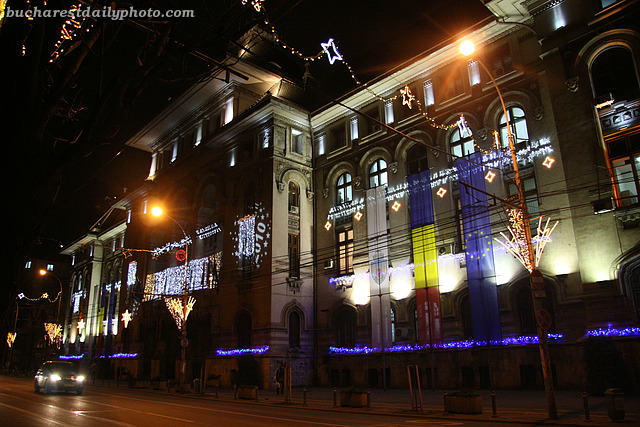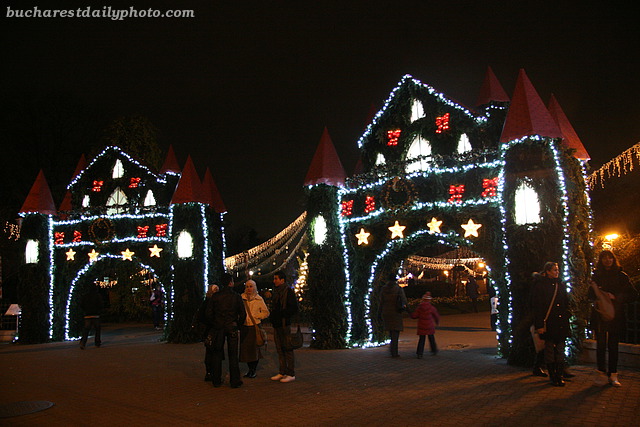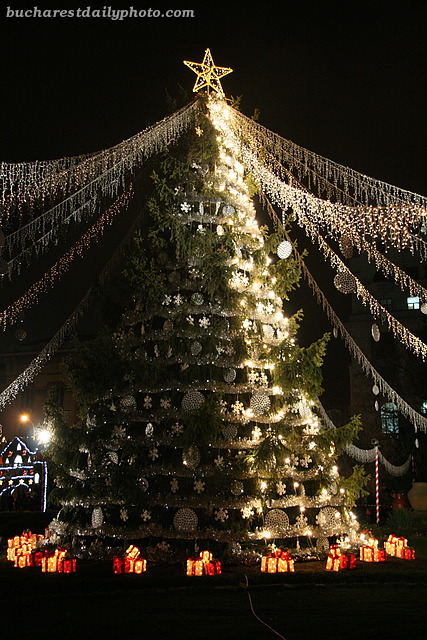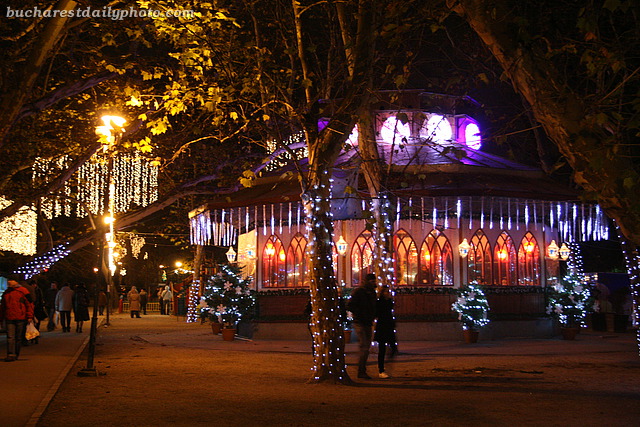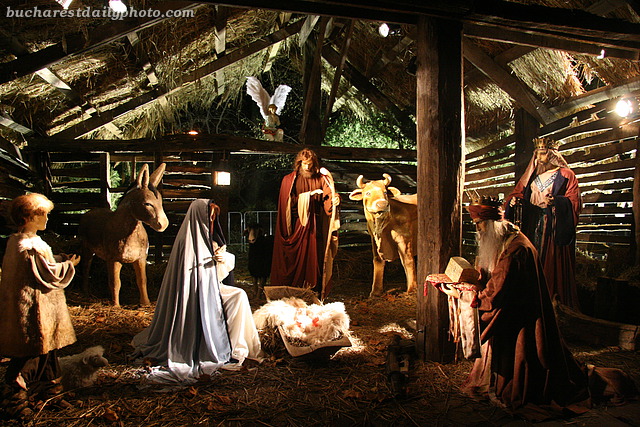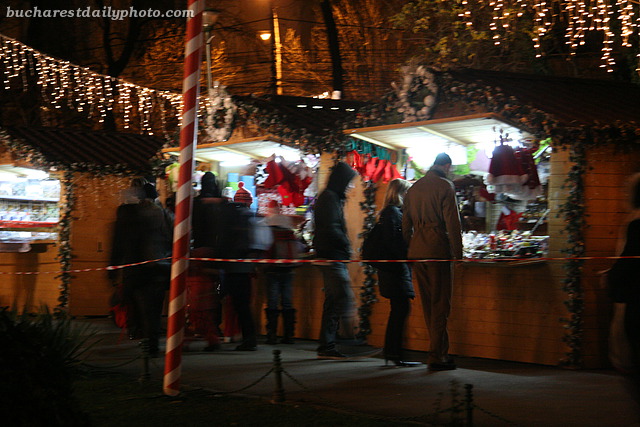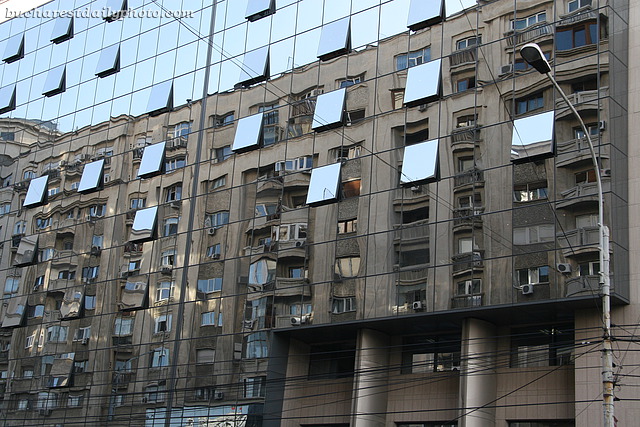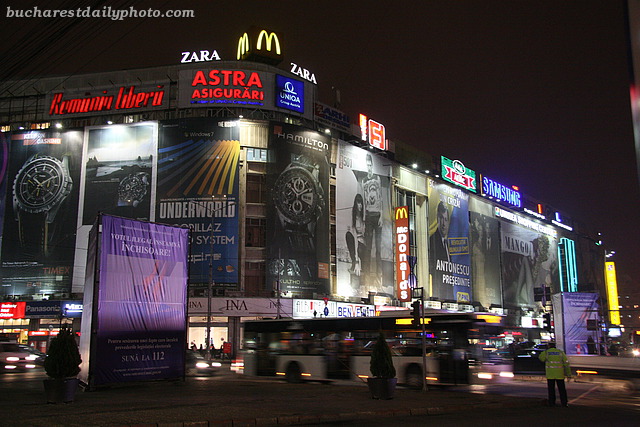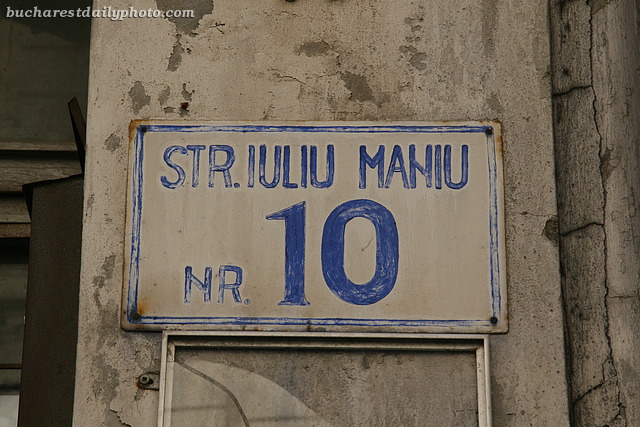The statues from four days ago belong to the building shown in today’s photo: the Astronomical Observatory of Bucharest, a beautiful house located on Lascăr Catargiu boulevard. It was built during the years 1908-1910 by architect I. D. Berindei for Admiral Vasile Urseanu (1848-1926). The Admiral’s passion was astronomy and he was the president of the first astronomical society of Bucharest, established in 1908. The house, built from the admiral’s personal funds and used by the society, has an astronomical cupola in its highest point (not visible in the photo) and was endowed by Urseanu with a telescope. After the death of the admiral the house passed to his wife who in 1933 donated it to the state to be used as the city’s first Art Galley (Pinacoteca). The Astronomical Observatory and Bucharest’s Art Gallery coexisted in the building until 1949 when the paintings were moved to the National Gallery and the Museum of City of Bucharest. The observatory is open for public.
The round snack that you see in today’s photo is a Romanian favourite. They are made of flour, yeast, malt, salt and water and can be sprinkled with poppy seed or sesame. They can be either round shaped (like in today’s photo) or shaped like a smaller pretzel (I promise to show you a photo soon). In Romanian they are called “covrigi” (singular “covrig”). They are so popular that there are bake shops whose only purpose is to manufacture and sell covrigi. This kind of bake shops are called “covrigărie”. Covrigi make for a filling snack and cost very little and for this reasons some people call them “the food of the poor”. But I’ve seen all sorts of people queuing up to buy covrigi because the smell of a freshly baked covrig is something hard to resist. The ones in today’s photo are not freshly baked but they have their charm too: they go well with beer 🙂
Winter is officially here – if there was any doubt 🙂 We just had the first serious snow of the year. Despite of the deserted bus station in today’s photo, many people were still out and about today. Life must go on 🙂
The outdoor ice skating rinks have become a traditional fixture of Bucharest’s winter. And judging by the crowds in today’s picture they are indeed very popular. Everyone seemed to be having fun on the ice last evening in Cişmigiu.
These two lovely statues that are the subject of today’s photos decorate the facade of Bucharest’s Astronomical Observatory, located on Lascăr Catargiu boulevard. The building that houses the observatory was the property of an admiral, Vasile Urseanu, hence the marine theme.
Believe it or not we used to celebrate Christmas during communism although not officially of course (for those who don’t know, the communists are atheists). Christmas came packaged with New Year Celebration and they were officially known as “The winter holidays”. We decorated the Christmas tree with whatever we were able to find and on December 24th, “Father Winter”, Santa Claus’ identical twin, arrived with presents. I remember when Father Winter (a colleague of my parents) came to bring me presents when I was about 5 years old. I was so nervous that I forgot the poem I was supposed to recite. However, he was nice and left me presents nonetheless. By and large I had a happy childhood during communism despite the lack of some basic needs. I realize now that it was thanks to my parents who tried to shelter me from life’s reality.
The picture above is from Romană Square. The next two are taken on Magheru Boulevard where the city hall reused some of last year’s decorations (cost cutting in the economic downturn I think). The last one is showing the University roundabout.
This evening I took a stroll downtown to check out this year’s Christmas decoration. I snapped quite a few pictures and this presented me with a problem: I couldn’t decide which photo I like best. For this reason for today Bucharest daily photo will transform in Bucharest daily photos. I might also “bore” you with this theme for the next two or three days (maybe). Today’s photos were taken in and around Cişmigiu Park. The park was full of people curious to check out the decorations. Everybody was snapping pictures so this time I wasn’t the only one carrying a camera. The photo above is Bucharest’s City Hall located right across from Cişmigiu Park.
The entrance to the park:
The last two photos are showing customs that are not traditional Romanian, but were imported from Western Europe in the last years: the nativity scene and the Christmas market.
For today a grim communist style tenement block reflecting in a dull glass building, the kind that nowadays you can see all around the world. Architectural boredom at its best, but part of Bucharest too and this is why I decided to show them.
We like to confuse tourists here in Bucharest. I’m kidding of course, we don’t aim to do that, but somehow that is the result 🙂 Take for example street names. In a 550 years old city like Bucharest, street names should be well established and shouldn’t change too often, right? Well, that’s not exactly true. Starting with the end of the 19th century the municipality of Bucharest started to pay attention to street naming in their attempt to make a more western city out of our capital. They did that by taking after the European habit of naming the streets after great personalities of the time or important figures in history. And so started the politics of street names. When a new government would gain power they would see it fit to rename some of the streets. When the communists came to power after WWII they transformed this “sport” into a form of art; they started a wide campaign of renaming the streets and giving them names that had some link with the regime, for example names of communist leaders – who would also change every few years when that particular communist hero would fall into disgrace. Historical personalities up to 1859 were also favored. When the communist regime was overthrown in 1990 another wide campaign of renaming the streets was started. This time the goal was to remove the names of the communist regime. One of the streets in the Old Town, which is the subject of today’s photo, was called over the years Işlicarilor, Franceză, Carol I, 30 Decembrie (under the communists), Iuliu Maniu and finally the name was changed back to Franceză. Nowadays most of the streets in Bucharest reverted to their inter-war names. Sometimes it happens that people still refer to a street by its former name having no idea that the name has changed; people in their 70s and 80s refer to the street by its between the wars name, people in their 50s and 40s call it by its communist name and the younger generation uses the name given after 1990. Today’s photo shows an old street name plate that can still be found on the above mentioned Franceză Street, from the time the street was called Iuliu Maniu.
